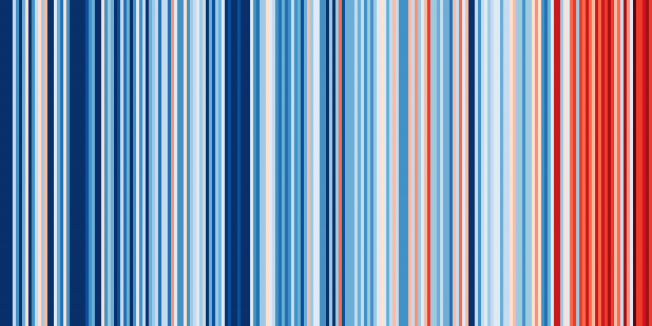The importance of stratospheric initial conditions for winter North Atlantic Oscillation predictability and implications for the signal‐to‐noise paradox
Quarterly Journal of the Royal Meteorological Society John Wiley and Sons, Ltd. 145:718 (2018) Part A, 131-146
Abstract:
This study investigates the influence of atmospheric initial conditions on winter seasonal forecasts of the North Atlantic Oscillation (NAO). Hindcast (or reforecast) experiments – which differ only in their initial conditions – are performed over the period 1960–2009, using prescribed sea surface temperature (SST) and sea‐ice boundary conditions. The first experiment (“ERA‐40/Int IC”) is initialized using the ERA‐40 and ERA‐Interim reanalysis datasets, which assimilate upper‐air, satellite and surface observations; the second experiment (“ERA‐20C IC”) is initialized using the ERA‐20C reanalysis dataset, which assimilates only surface observations. The ensemble mean NAO skill is largest in ERA‐40/Int IC (r = 0.54), which is initialized with the superior reanalysis data. Moreover, ERA‐20C IC did not exhibit significantly more NAO hindcast skill (r = 0.38) than in a third experiment, which was initialized with incorrect (shuffled) initial conditions. The ERA‐40/Interim and ERA‐20C initial conditions differ substantially in the tropical stratosphere, where the quasi‐biennial oscillation (QBO) of zonal winds is not present in ERA‐20C. The QBO hindcasts are highly skilful in ERA‐40/Int IC – albeit with a somewhat weaker equatorial zonal wind amplitude in the lower stratosphere – but are incorrect in ERA‐20C IC, indicating that the QBO is responsible for the additional NAO hindcast skill; this is despite the model exhibiting a relatively weak teleconnection between the QBO and NAO. The influence of the QBO is further demonstrated by regressing out the QBO influence from each of the hindcast experiments, after which the difference in NAO hindcast skill between the experiments is negligible. Whilst ERA‐40/Int IC demonstrates a more skilful NAO hindcast, it appears to have a relatively weak predictable signal; this is the so‐called “signal‐to‐noise paradox” identified in previous studies. Diagnostically amplifying the (weak) QBO–NAO teleconnection increases the ensemble‐mean NAO signal with negligible impact on the NAO hindcast skill, after which the signal‐to‐noise problem seemingly disappears.Seasonal to annual ocean forecasting skill and the role of model and observational uncertainty
Quarterly Journal of the Royal Meteorological Society Wiley 144:715 (2018) 1947-1964
Abstract:
Accurate forecasts of the ocean state and the estimation of forecast uncertainties are crucial when it comes to providing skilful seasonal predictions. In this study we analyse the predictive skill and reliability of the ocean component in a seasonal forecasting system. Furthermore, we assess the effects of accounting for model and observational uncertainties. Ensemble forcasts are carried out with an updated version of the ECMWF seasonal forecasting model System 4, with a forecast length of ten months, initialized every May between 1981 and 2010. We find that, for essential quantities such as sea surface temperature and upper ocean 300 m heat content, the ocean forecasts are generally underdispersive and skilful beyond the first month mainly in the Tropics and parts of the North Atlantic. The reference reanalysis used for the forecast evaluation considerably affects diagnostics of forecast skill and reliability, throughout the entire ten‐month forecasts but mostly during the first three months. Accounting for parametrization uncertainty by implementing stochastic parametrization perturbations has a positive impact on both reliability (from month 3 onwards) as well as forecast skill (from month 8 onwards). Skill improvements extend also to atmospheric variables such as 2 m temperature, mostly in the extratropical Pacific but also over the midlatitudes of the Americas. Hence, while model uncertainty impacts the skill of seasonal forecasts, observational uncertainty impacts our assessment of that skill. Future ocean model development should therefore aim not only to reduce model errors but to simultaneously assess and estimate uncertainties.The northern hemisphere circumglobal teleconnection in a seasonal forecast model and its relationship to European summer forecast skill
Climate Dynamics Springer Verlag 52:5-6 (2018) 3759-3771
Abstract:
Forecasting seasonal variations in European summer weather represents a considerable challenge. Here, we assess the performance of a seasonal forecasting model at representing a major mode of northern hemisphere summer climate variability, the circumglobal teleconnection (CGT), and the implications of errors in its representation on sea7 sonal forecasts for the European summer (June, July, August). Using seasonal hindcasts initialised at the start of May, we find that the model skill for forecasting the interannual variability of 500 hPa geopotential height is poor, particularly over Europe and several other “centres of action” of the CGT. The model also has a weaker CGT pattern than is observed, particularly in August, when the observed CGT wavetrain is strongest. We investigate several potential causes of this poor skill. First, model variance in geopotential height in west-central Asia (an important region for the maintenance of the CGT) is lower than observed in July and August, associated with a poor representation of the link between this region and Indian monsoon precipitation. Second, analysis of the Rossby wave source shows that the source associated with monsoon heating is both too strong and displaced to the northeast in the model. This is related to errors in monsoon precipitation over the Bay of Bengal and Arabian Sea, where the model has more precipitation than is observed. Third the model jet is systematically shifted northwards by several degrees latitude over large parts of the northern hemisphere, which may affect the propagation characteristics of Rossby waves in the model.Predicting El Niño in 2014 and 2015
Scientific Reports Springer Nature 8 (2018) 10733
Abstract:
Early in 2014 several forecast systems were suggesting a strong 1997/98-like El Niño event for the following northern hemisphere winter 2014/15. However the eventual outcome was a modest warming. In contrast, winter 2015/16 saw one of the strongest El Niño events on record. Here we assess the ability of two operational seasonal prediction systems to forecast these events, using the forecast ensembles to try to understand the reasons underlying the very different development and outcomes for these two years. We test three hypotheses. First we find that the continuation of neutral ENSO conditions in 2014 is associated with the maintenance of the observed cold southeast Pacific sea surface temperature anomaly; secondly that, in our forecasts at least, warm west equatorial Pacific sea surface temperature anomalies do not appear to hinder El Niño development; and finally that stronger westerly wind burst activity in 2015 compared to 2014 is a key difference between the two years. Interestingly, in these years at least, this interannual variability in wind burst activity is predictable. ECMWF System 4 tends to produce more westerly wind bursts than Met Office GloSea5 and this likely contributes to the larger SST anomalies predicted in this model in both years.An intercomparison of skill and over/underconfidence of the wintertime North Atlantic Oscillation in multi-model seasonal forecasts
Geophysical Research Letters American Geophysical Union 45:15 (2018) 7808-7817



